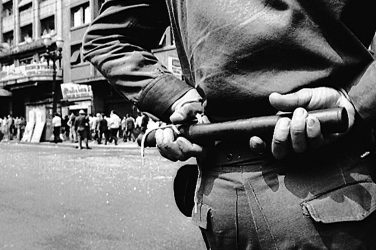Brazil and Mexico are among the countries that saw the highest increases in impunity ratings in cases of murders of journalists over the past 10 years, according to the Committee to Protect Journalists (CPJ) and its 10th Annual Global Impunity Index.
“Impunity in the murders of journalists can be an intractable cycle stretching over a decade or more,” said Elisabeth Witchel, CPJ Impunity Campaign Consultant, according to an organization press release to mark the October 31 launch of the index.
CPJ highlighted that in the ten years since the organization first published the index, Mexico’s impunity rating increased by 142 percent. Though Brazil did not appear on the index for all 10 years, its impunity rating shot up by 177 percent over that time.
This is also the third consecutive year in which Mexico and Brazil are the only Latin American countries on the index, which lists countries where murders of journalists go unpunished.
Once more, Mexico ranks sixth on the list and Brazil is eighth. Mexico’s ranking was the same last year, while Brazil was ranked ninth in 2016.
The index is published each year to mark the International Day to End Impunity for Crimes against Journalists, proclaimed by the United Nations General Assembly to take place annually on November 2.
The full index, starting with the country with the highest rate of impunity is: Somalia, Syria, Iraq, South Sudan, Philippines, Mexico, Pakistan, Brazil, Russia, Bangladesh, Nigeria and India.
According to CPJ, 21 journalists have been killed in Mexico with complete impunity. The organization pointed to criminal groups, like drug traffickers, as the perpetrators in the murders of local journalists reporting on crime, corruption and politics in states where cartels dominate.
CPJ counts at least four journalists who have been murdered this year in Mexico. Because organizations vary in their criteria for considering murders, other organizations have recorded up to ten journalists who have been killed in the country in 2017.
An emblematic case highlighted by CPJ was the May 15 murder in Culiacán, Sinaloa of Javier Valdez Cárdenas, the 2011 recipient of CPJ’s International Press Freedom Award. The organization noted that no one has been arrested in the case.
CPJ pointed to the fact that Mexico is one of four countries on the list that are on the governing council of the Community of Democracies, which is “dedicated to upholding and strengthening democratic norms.”
As progress in the fight against impunity, CPJ referenced the 30-year conviction of police commander Santiago Martínez for the Jan. 21, 2016 murder of Marcos Hernández Bautista in Oaxaca. However, it noted the mastermind of the murder has not been prosecuted.
CPJ also highlighted the release of its special report “No Excuse” and a subsequent meeting between its delegation and Mexican President Enrique Peña Nieto, who pledged to prioritize the fight against impunity. The leader also replaced the Special Prosecutor for Crimes Against Freedom of Expression (FEADLE).
Fifteen journalists were killed in Brazil in the last ten years with complete impunity. CPJ named government officials and criminal groups as the perpetrators of murders targeting journalists reporting on corruption, crime and politics outside major cities.
As a positive note, CPJ said that it has not recorded new murders in the country for the first time since 2009. It said it was “a possible indication that its stepped-up efforts to combat impunity.” Additionally, it noted that the government has convicted suspects in six cases in the past four years.
However, it said that “while the murders of journalists have slowed, so have prosecutions.” It pointed out that there haven’t been any convictions for the murder of a journalist since 2015.
CPJ highlighted the 2015 case of Gleydson Carvalho who was killed while on air. Though five suspects were arrested, none have been tried and the suspected mastermind is at-large, the organization reported.
To make the index the organization looks “at the number of unsolved murders over a 10-year period as a percentage of each country’s population.” The murders examined for this year’s report occurred between September 1, 2007 and August 31, 2017.
Murder is defined as a “deliberate attack against a specific journalist in relation to the victim’s work.” The list doesn’t include when journalists are killed in combat or while on dangerous assignments. The index also only looks at murders where complete impunity results – meaning no convictions have been made in the cases.
This article appeared originally at the Knight Center for Journalism in the Americas – https://knightcenter.utexas.edu





